WordPress Travel Map Plugin (CMMRM) - Free Version Tutorial
WordPress Travel Map Plugin - Free Version Tutorial
WordPress Travel Map Plugin
Learn more about Pro version of the WordPress Travel Map Plugin
This article covers only features present in the free version of the WordPress Travel Map Plugin. It shows you how to create a directory of routes on your site.
Example



Table of Contents
Installation guide
Here are the steps needed to install the plugin:
- Download - To manually install the plugin, you must first download it from CreativeMinds to your computer.
- Navigate to the Plugins tab in the WordPress Admin Panel to install the plugin.
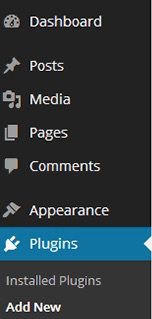
- Activate the plugin.
TIP: Register for Benefits
If you like, you can register your plugin to receive information about updates and our latest offers. You can complete your registration at any time.
If you don’t want to register right away, you can select the Skip button.
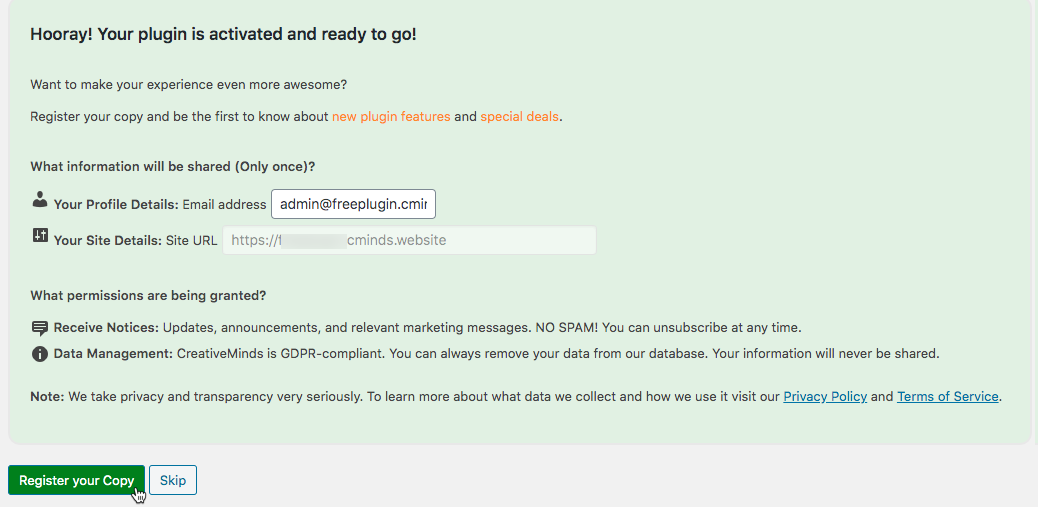
List of Features
WordPress Travel Map Plugin
Learn more about Pro version of the WordPress Travel Map Plugin
Using the Free Plugin - Overview
TIP: Automatic Index and User Dashboard Pages
The plugin automatically creates:
- A Routes index page - All routes will be shown there. New routes are added automatically.
- A user dashboard page - Users can manage their routes and add new ones from there.

Admin - Adding and Managing Routes
You can add and manage routes from the back-end. Head to Admin Dashboard → CM Map Routes → Routes.
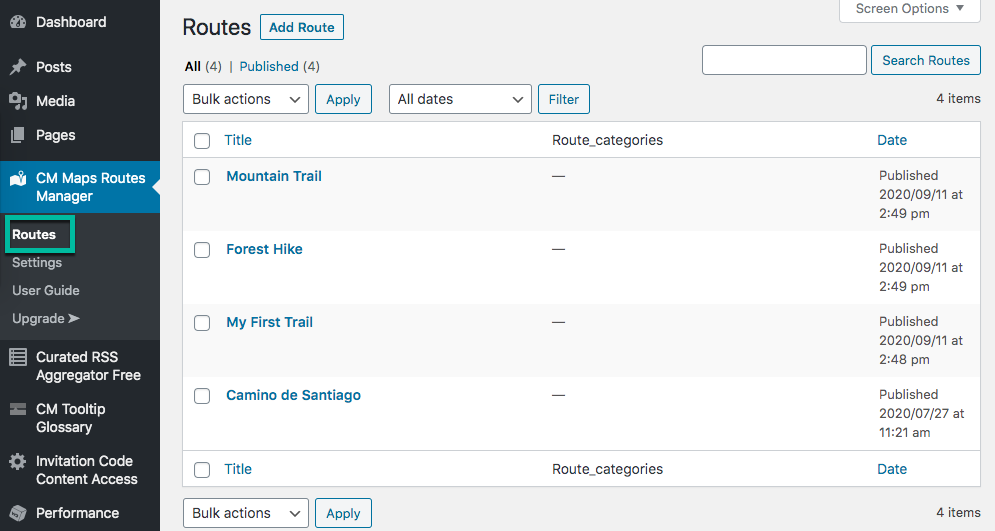
User Dashboard - Adding and Managing Routes
Every route is "attached" to the user that created it, including the admin!
The user dashboard page lists all routes added by the currently logged-in user. As such, the content changes depending on who accesses it. There's also a handy Add route button.

What Does It Look Like to Add a Route?
All users (including the admin) can add routes from a front-end form. It includes a series of fields, including a Google Map where the user can draw the route. Here is a sample of the form:
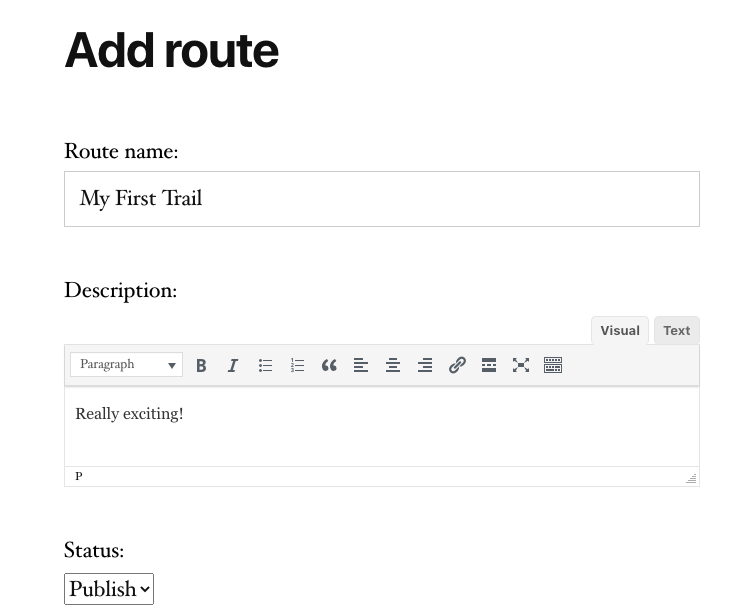
Initial Setup
A core aspect of the plugin is showing routes on a Google Map. To do so, you require creating and then add a Google Maps API key into the plugin.
Important
- Starting from July 2018, Google Maps, Routes, and Places require billing information, such as an associated credit card.
- The pricing system also changed, but in practice, the services are still free for limited use.
Google API Keys - Obtaining the Google API Key
To obtain the Google API key, follow these steps:
- Head to the Google Developers webpage.
- Log in to your Google account.
- Go to your project or create a new one.

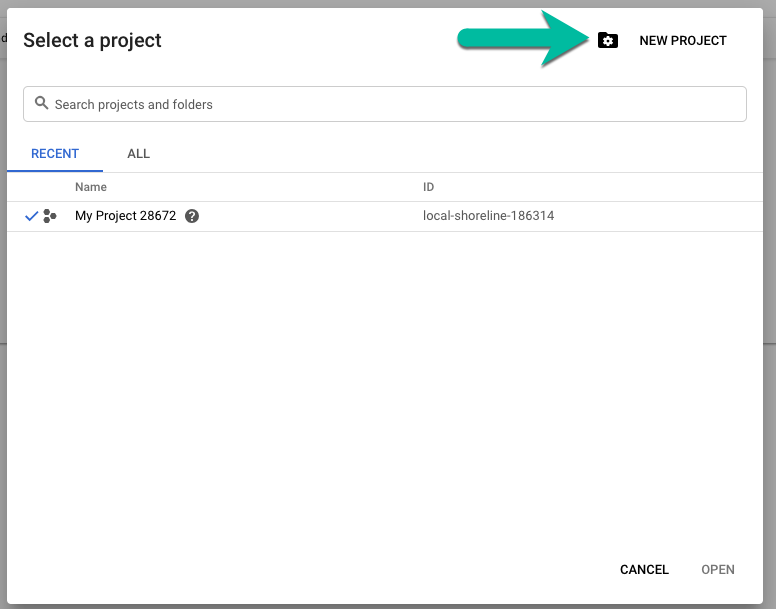
- Head to APIs & Services and then Library:
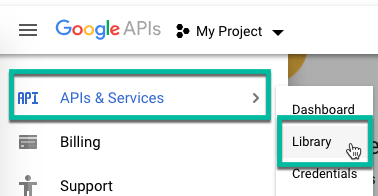
- Select one of the API from the list. You may have to search for it by using the search bar.
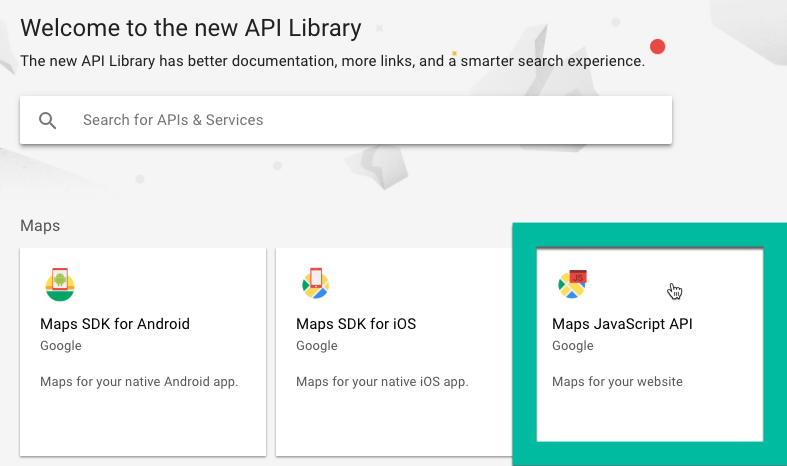
- This page is important. In it, you can enable the API and find resources about it. Click Enable:
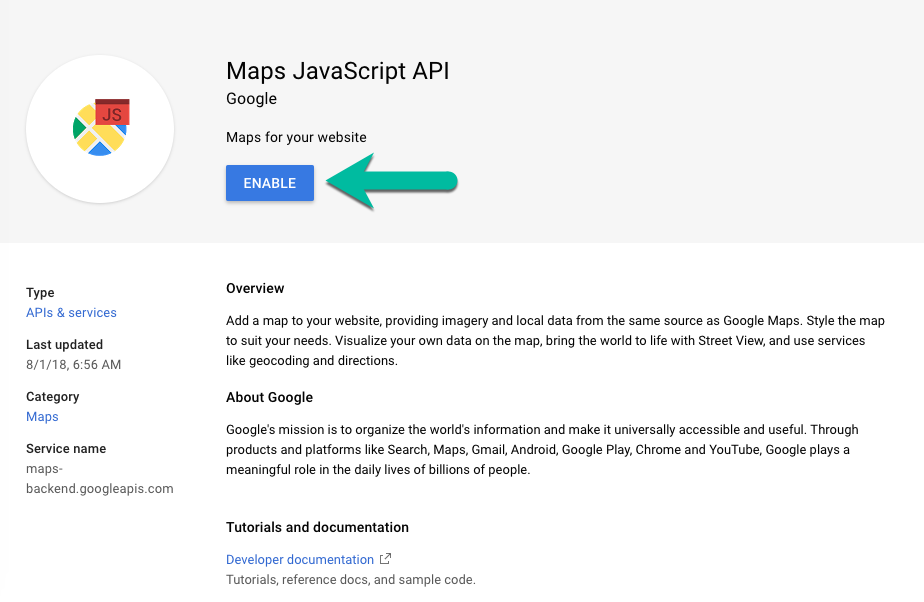
- Repeat steps 5 and 6 for all the API keys you need to enable:
- JavaScript API
- Geocoding API
- Places API
- Static API
- Elevation API
- Directions API
- After you have enabled all the API Keys, activate the sidebar menu and click on Credentials. You will find the API key there, ready to be copied and pasted into the plugin's settings.

Billing
Also, if you have still not enabled billing, you can do so by activating the sidebar menu and then selecting Billing.

Then click Link a billing account and follow the steps.

Adding Key to Plugin
Once you have the key, adding it to the plugin is easy. Head to the Setup tab and copy it to the Google Maps App key field.
In the same setting, you can click Test Configuration to ensure the connection is working.

Settings - Navigation (Routes URL)
Permalink prefix - The prefix of the index and routes' permalinks.
For example, "map-routes" will generate permalinks such as: site.com/map-routes/mountain-trail.
By default, it's "map-routes".
Settings - General (Template, Units, Map Behavior, Custom CSS)

In this tab, you can configure the overall plugin behavior and appearance.
Template
- Page template: Choose the page template of the current theme or set default.
Other page template file - Enter the other name of the page template if your template is not on the list above. This option has priority over the selected page template. Leave blank to reset.
Advanced!
Editing templates is an advanced process that may require HTML, CSS and coding skills.
Make sure to back up all files before saving changes. This article provides examples of changes, but they are illustrative and not meant to be followed literally.
General Support - Advanced - Creating and Editing Custom Templates
Appearance
- Default map view - Choose between
- road map
- terrain
- pure satellite without labels
- hybrid: satellite + labels
- Zoom map when using mouse wheel - If enabled, scrolling the mouse when it's over the map will zoom out or zoom in.
Custom CSS
You can enter a custom CSS which will be embedded on every page that contains a WordPress Travel Map plugin interface.
Quick Read
What is CSS
CSS allows you to make changes that WordPress, themes and even the plugins don't support. Be sure to test all changes before applying!
Learn more: General Support - Advanced - Custom CSS
CreativeMinds Can Help
If you prefer not modifying CSS and visual elements by yourself, CreativeMinds can help to adapt CM plugins to your theme.
Learn more: Plugin Installation Service for WordPress by CreativeMinds
Units
- Length unit - Choose between:
- meters
- feet
Settings - Index Page
You can configure everything related to the index page in this tab.

Pagination, order, search
- Routes per page - Limit the routes visible on each page. The default is 10.
Appearance
- Information visible on the index page - Show or hide
- Distance
- Duration
- Max elevation
- Min elevation
- Climb
- Descent
- AVG Speed
- Featured image
- Publish date
Author
Where The Fields Are

Front-end example of the route details visible on the index page
Text on top - Enter what is displayed on the top of the index page, below the page title.
Highlighted Example

Example of the text at the top of the index page
Route's featured image - Choose between:
- First route image
- Map thumbnail
- Route's default image - Useful for branding.
Settings - Route Page
You can configure everything related to the route page in this tab.
Tip: Description is Always Show
You can show or hide some elements, but the route description will always be shown.

Appearance
- Information visible on the index page - Show or hide:
- Distance
- Duration
- Max elevation
- Min elevation
- Climb
- Descent
- AVG Speed
- Location altitude
Location address
Highlighted Example

Front-end example of the route details - Enable WP Comments - Disable to hide the comments fields.
Settings - User Dashboard Page

Editor
- Enable rich text editor - Allow or not users to use the WYSIWYG editor when creating the route description. If disabled, a simple textarea will be displayed.
Map default position
- Editor default route's latitude - By default, 0.
- Editor default route's longitude - By default, 0.
- Editor default zoom - Higher number means closer. By default, 5.
 |
More information about the WordPress Travel Map Plugin Other WordPress products can be found at CreativeMinds WordPress Store |
 |
Let us know how we can Improve this Product Documentation Page To open a Support Ticket visit our support center |



